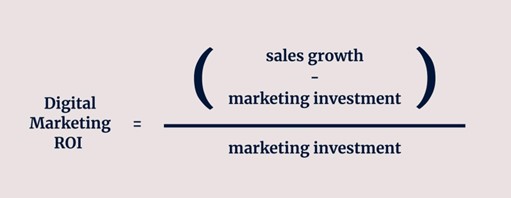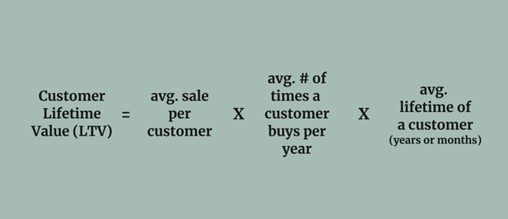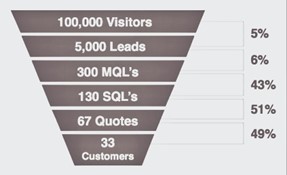In this blog, we will talk about the best marketing KPIs you can implement in your marketing strategy today.
What are Marketing Key Performance Indicators(KPIs)?
Key performance indicators (KPIs) in marketing are quantitative performance measures for specific strategic objectives.
Marketing KPIs are used by marketing leaders and teams to evaluate the efficacy of their efforts, guide strategy, and optimize programs and campaigns.
Key performance indicators include “marketing qualified leads” and “cost of client acquisition.”
What are Marketing Metrics?
Marketing metrics monitor the effectiveness of daily marketing operations that support KPIs.
Although metrics impact the overall marketing success, they are not the most essential measurements. “email open rate” or “keyword ranking” are examples.
Explaining the Idea
Do you know what makes the marketing efforts of your firm successful? Any insight into your company’s marketing performance? Any hints as to why your business is operating well or poorly?
Understanding your marketing’s KPIs (Key Performance Indicators), often known as what’s working and what’s not, should be an integral component of your company’s growth strategy.
If not, then you should probably continue reading.
As a firm operating in the twenty-first century, you should have a complete awareness of what makes your company’s marketing activities successful.
On the other hand, there should be no mystery as to why your company’s marketing efforts are failing.
All marketing efforts should be measurable.
There is no justification for not understanding why your company’s marketing efforts are succeeding or failing in comparison to the competitors.
There is NO EXCUSE for not understanding why your company’s marketing efforts are failing or destroying the competition. Zero. Zilch. Nada.
It is time to begin devoting effort to comprehending your company’s marketing KPIs. This moment is now.
There are so many marketing KPI examples out there today, all of which likely have some applicability to your company’s marketing initiatives.
Chances are if you search simply for ‘marketing KPIs’, you will find a mishmash of something or other that should help you enhance your marketing strategy.
But not all of them are worthwhile.
For instance, on this list, you won’t find any KPIs around old-school metrics like circulation, impressions, or brand awareness.
The following is a list of marketing KPIs you need to be measuring…but presumably aren’t.
1. Attribution of marketing income
How much money have your company’s digital marketing strategies generated? In other words, what proportion of your revenue is attributable to your content marketing efforts?
Understanding this measure is crucial since it allows you to evaluate the efficacy of your marketing.
No business wants to invest in something that is not producing a return on investment (ROI).
According to the author of They Ask, You Answer, Marcus Sheridan, the only content that is persuasive is a material that concocts sales.
This is why revenue attribution is at the top of the list of marketing KPIs.
You can use this to track and estimate your efforts, not just your overall performance.
Utilize the formula below to compute your digital marketing ROI:

You can also monitor the impact of particular components of your marketing strategy, such as blogging and social media, on sales.
There are a variety of models available for tracking revenue attribution, such as single-touch attribution models that focus on the first or final encounter a user has with your website.
Additionally, you may examine multi-touch attribution models that allocate deal credits across each touchpoint.
With marketing revenue attribution, you evaluate how much of your revenue is influenced by your marketing activities beyond the number of quality leads you close.
This is a terrific approach for your team to demonstrate the monetary value of their efforts.
If you use HubSpot, they make it simple to track and report on these metrics.
2. Customer Acquisition Cost
Customer acquisition cost (CAC) is the entire amount spent on sales and marketing to acquire a new customer.
This comprises all program and marketing costs, salaries, commissions, technology, software, and administrative expenses connected with a lead converting into a customer.
You must calculate your CAC not only for digital marketing but also for outbound marketing.
Thus, you can comprehend the whole breadth of your efforts and determine which are more effective.
When computing this measure, you must define the period over which this cost will be evaluated (e.g., month, quarter, year).
Use the examples below to calculate your total sales and marketing expenditures related to digital and outbound marketing after determining your time frame.
Relevant costs when calculating CAC for digital marketing include:
- Manpower (sales, creative, and technical)
- Technologies and applications including HubSpot, Vidyard, and Semrush
Calculating CAC for outbound marketing based on general overhead, significant costs include:
- Advertising
- Marketing distribution
- Manpower (sales and marketing)
- Total overhead
You can determine your CAC for digital or outbound marketing using the following formula:

Customer acquisition cost is one of the ten marketing KPIs you need to track.
By quantifying the costs connected with your digital and outbound marketing efforts, you can account directly for new sales and allocate resources for each campaign more effectively.
If your firm relies mostly on digital marketing, you may measure the performance and profitability of each action by segmenting it further by campaign type.
Then, actions can be implemented to enhance effectiveness over time.
You can reduce the cost of client acquisition by devoting a little more effort to initiatives that optimize conversion rates.
Integrating calls-to-action (CTAs) and links to relevant material throughout your website and blog makes it easier for website visitors to convert into leads.
Ensure that the information is as transparent as possible and that it represents your ability to alleviate the pain points of prospective clients and answer their inquiries.
3. Leads
This is straightforward Math. The greater your number of leads, the greater your number of sales opportunities, and the greater your number of sales opportunities, the greater your likelihood of sales growth.
The value of leads to a marketing and sales department is analogous to that of fuel to a vehicle; it is what drives them.
However, not all leads are made equal. Make sure you understand the distinction between Marketing Qualified Leads (MQLs) and Sales Qualified Leads (SQLs) (SQLs). These are just distinct stages of the lead’s lifetime.
Based on lead intelligence, a marketing qualified lead (MQL) is a lead deemed more likely to become a customer than other leads.
MQLs are individuals who have raised their hands (by downloading an eBook or whitepaper, for instance) and recognized themselves as more deeply engaged, sales-ready contacts than your typical leads, but who have not yet matured into prospects (source).
A sales qualified lead (SQL) is a prospect that your sales team has determined merits direct sales pursuit (source).
SQLs have undergone extensive screening and suggest a decision-ready candidate.
Understanding the rapport between MQLs and SQLs is crucial for calculating your company’s Leads to Close ratio, which is the number of leads you’ve received over a certain period divided by the number of leads you’ve closed.
4. A customer’s lifetime worth (Value)
Client lifetime value is the amount of money a company can realistically anticipate from a single customer throughout their usual lifetime.
This is one of the most essential marketing KPIs because it costs money to acquire new customers; if you can produce more income from existing customers, your cost per lead will decrease and your marketing budget may be allocated to higher-quality leads.
You can calculate the lifetime value of your clients using the formula below:

By designing lead nurturing efforts that reach out to existing customers, you and your sales team may update existing customers about new services, products, and resources, thereby increasing the lifetime value of your clients.
Often, automated messages feel impersonal. Consider developing a personal relationship with your customers, as you would with a family member or close friend.
This type of communication may be more effective if it comes from the company’s CEO.
5. The Average Response Time of a Sales Team
In general, sales teams respond excruciatingly slowly to B2B leads.
The average first response time for B2B enterprises to their leads was 42 hours, according to a study of 2,241 US organizations.
This is an issue because the quality of lead diminishes over time.
This study indicated that the probability of making successful contact with a lead is one hundred times greater if a contact attempt is made within five minutes as opposed to thirty minutes after the lead is filed.
The question then becomes, how quickly does your sales team respond to leads? And how quickly does the sales team of your rival respond to leads? After measuring this KPI, you may then work to improve it.
6. The ratio of website traffic to website leads
This is a fairly simple matter. How many of your website’s visitors become prospects? This KPI measures two factors:
- The caliber of your website’s visitors base
- Your website’s conversion rate
What is essential here is establishing a benchmark; what is the current ratio? And how can you make it better?
Focusing on increasing the website’s conversion rate is frequently a simple strategy to increase this ratio.
The following funnel diagram gives an overview of this KPI and the subsequent KPIs.

7. The ratio of Website Leads to Marketing-Qualified Leads (MQL)
How many of the website’s generated leads are elevated to MQL status? This metric can oblige you to determine the quality of the leads generated by your campaign.
Are a small percentage of your leads qualified for marketing? If this is the case, you should likely examine the quality of your website’s traffic.
8. The Ratio of MQL to SQL
How many of your MQLs are elevated to SQL status? This measure examines the cooperation between the marketing and sales departments.
Expect a high percentage if there is clear communication and mutual understanding between these two teams.
Nevertheless, there is often a mismatch between both teams, resulting in disputes regarding the quality of the leads generated by marketing and the attention they obtain once sales receive them.
It is conceivable that marketing generates an enormous number of leads, but sales are not following up on them, resulting in an indigent MQL to SQL ratio.
You will not know any of this without measuring this KPI.
9. SQL to Quote Ratio
This KPI reflects the sales team’s ability to prosper qualified leads to the quote/proposal stage.
Why do some prevail and others do not?
Several aspects impact whether or not a SQL is quoted (timeline, budget, competition, customization, etc.), and it will be vital to comprehend and examine these factors to have greater supervision over them.
10. Ratio of Quoted to Closed Customers
In essence, this is your team’s close rate. How many of the prospects that your sales staff quotes ultimately become customers?
Is this ratio greater or less than it was a year ago? Why? What can you do to make things better?
11. Website Traffic
These are the visitors to your website. They are leads that have the potential to become clients. Why would you not desire to learn more about them?
To get to know your website visitors, you must determine who they are, where they are from, and what they did on your site.
All of this information can assist you in determining the most crucial detail: what they want from you.
Knowing this helps you envisage it because marketing is all about anticipating the demands of potential clients.
However, website traffic is perhaps too generic a term. All components of the concept of website traffic are very measurable and strongly tied to engagement.
They consist of:
- Sessions
- Users
- Views of a page
- Page per session
- Average Duration per season
- Bounce Rate
The Gist of it All
Keeping track of the Key Performance Indicators (KPIs) for your marketing efforts will help you justify everything you do as a marketing expert, regardless of whether you sell to businesses or consumers.
In addition, businesses now have access to a multitude of tracking technologies, which means that they have greater options for transparency than they ever have before in their marketing operations.
Find out where you went wrong in your marketing and fix it.
Discover the successes you’ve had in marketing, and be sure to share them with your superiors.

















